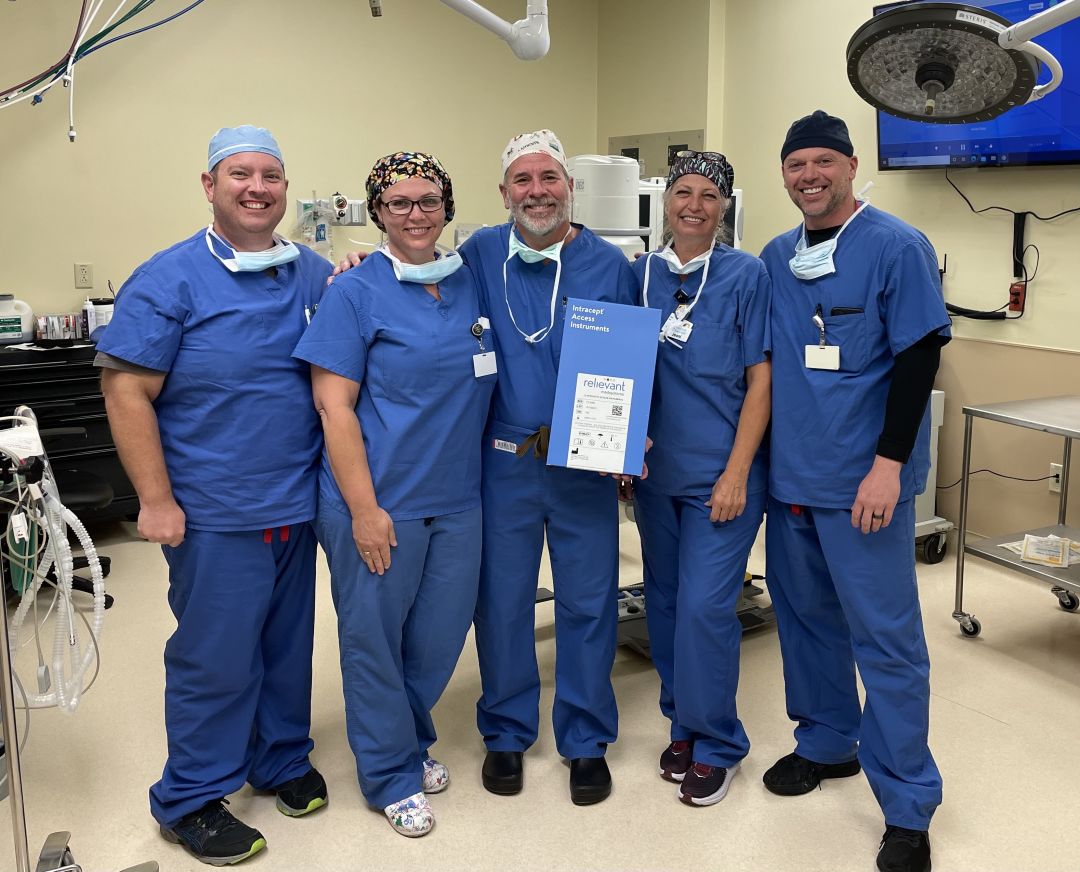Suffering From Chronic Back Pain? This New Non-Surgical Treatment May Help.

Image: TB studio/Shutterstock
If you suffer from chronic back pain, you are not alone. Nearly 65 million American adults have suffered from a back pain episode at some point in their lives, and one in four American workers say their back aches on the job. Chronic back pain is also the sixth most expensive condition to treat in the United States.
Besides splurging on ergonomic desk chairs or orthopedic shoes, typical courses of treatment for back pain include pain medication, massage, acupuncture, physical therapy and light exercise or stretching. For those who may suffer from a slipped disk or pinched nerve, however, surgery may be required.
What if you want to go the minimally invasive route?
A new non-surgical procedure called Intracept is a newer option. Physicians at Coastal Orthopedics of Bradenton have already implemented the new, U.S. Food and Drug Administration-approved treatment that targets the nerves in your lower back that cause chronic pain.
Dr. Richard Bundschu, a Coastal pain management physician specializing in interventional treatments of the neck and spine, has already performed the outpatient procedure a few times.
"I'm always looking for new ways to improve the quality of life for our patients," says Bundschu. "This new procedure has almost immediate and lasting results for patients who have had long-term pain."

From left to right: Dr. Daniel Smith, anesthesiologist; Heidi Nash, registered nurse; Dr. Richard Bundschu, pain management physician; Jeani Kimpland, scrub technician; Gabe Ramsey, certified registered nurse anesthetist.
Image: Courtesy Photo
How does it work?
Intracept targets a nerve located in the bone of the spine. During the procedure, a small incision is made at the base of the spine, where a small probe is fed through the vertebrae. Then, radiofrequency ablation (a process that uses heat to break down tissue) is used to disable the nerve, making it unable to transmit pain signals. This process improves function and pain relief.
What does recovery look like?
The procedure takes 60 to 90 minutes. Patients are sedated and a local anesthetic is applied to the incision site, so you should not feel pain. You will be able to walk after the procedure, but it is recommended that you rest and avoid certain movements for a few days. Full recovery should take one to two weeks.
Are there side effects?
Side effects could include pain and tenderness at the incision site. Doctors recommend applying ice to help with the pain and taking over-the-counter pain relievers. A post-procedure recovery plan typically includes follow-up visits and therapeutic exercises.
Who's the ideal candidate for Intracept?
The ideal candidate for Intracept is someone who's experienced chronic lower back pain for six months or more, has tried more conservative treatments without results or has had a magnetic resonance imaging session that indicates abnormalities between the L3 and S1 vertebrae.
Is it covered by insurance?
Radiofrequency ablation is typically covered by insurance providers, if it is deemed medically necessary by your physician and if there's a record that other treatment options have been ineffective. Some insurance providers will reimburse claims if you pay out-of-pocket for the procedure, which can cost from $10,000 to $15,000.
Medicare Part A and Part B will also cover this treatment if it is deemed medically necessary by your physician. Part A will cover inpatient procedures and Part B will cover outpatient procedures.
For more info, visit Coastal Orthopedics' website or call (941) 792-1404.



